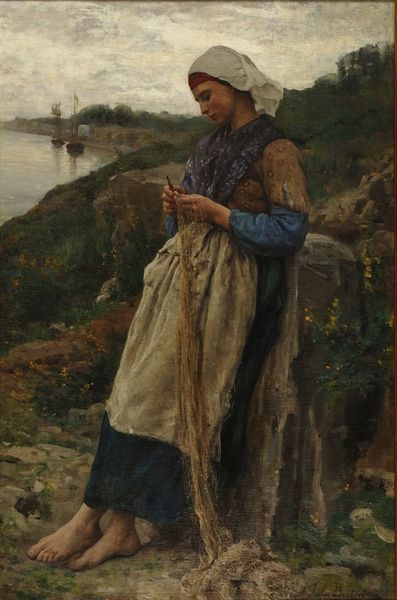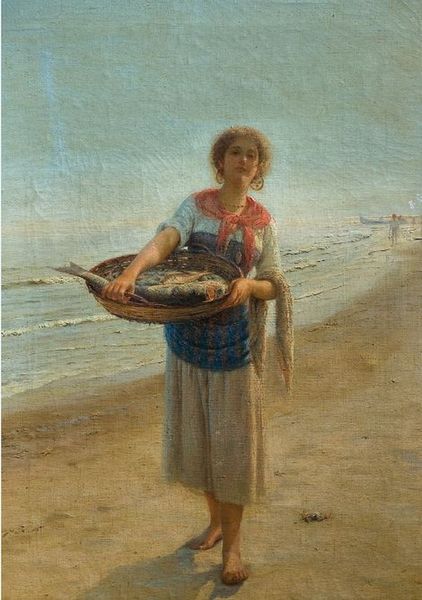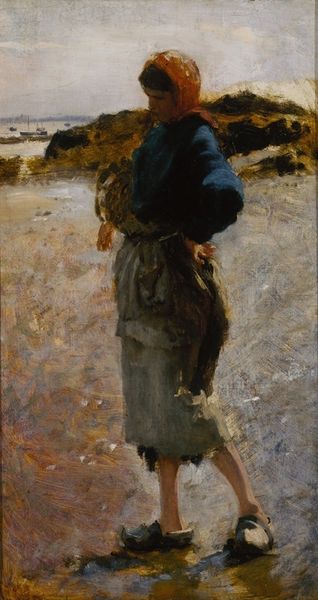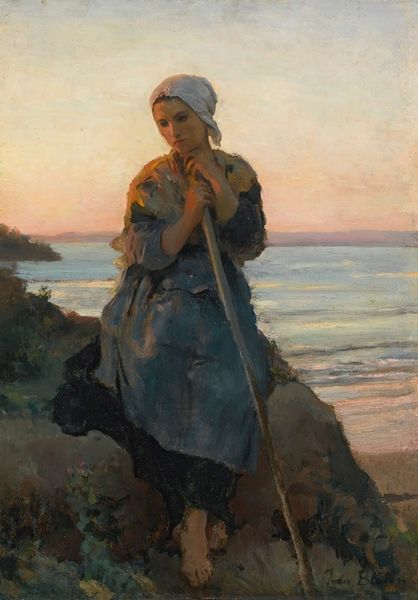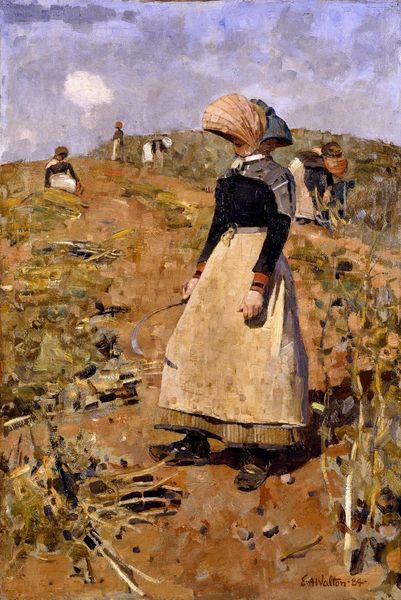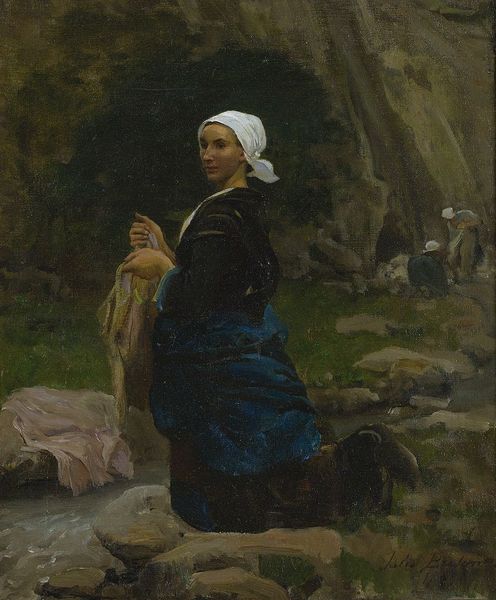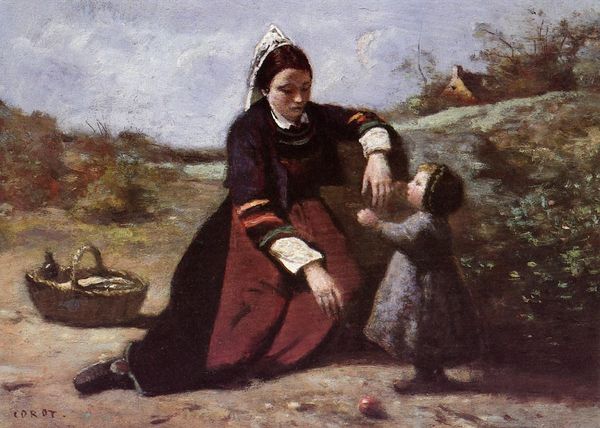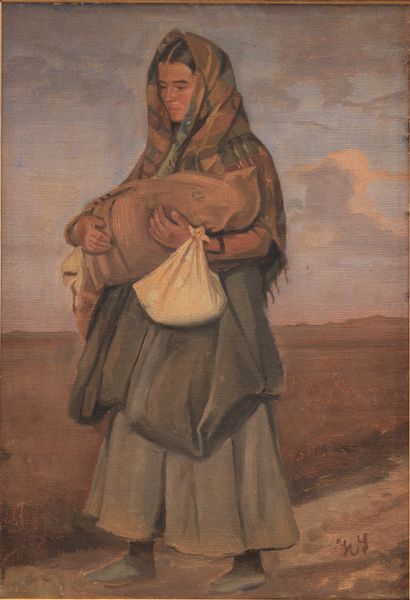
Copyright: Public domain
Editor: Here we have Jules Breton's "Fisherwoman, Douarnenez" from 1870, an oil painting showing a woman in what appears to be a coastal landscape. I'm struck by how grounded she seems, the basket looking weighty, her clothing substantial. What catches your eye? Curator: It's interesting you notice the materiality. For me, I look at the social and economic implications inherent in the subject and materials. Breton, part of the Realist movement, depicts the laboring class. Consider the origin and processing of the oil paints themselves – pigments mined and manufactured, a product of industrializing society. Even the canvas support, likely machine-woven, speaks to larger economic forces. Editor: So you're seeing the artwork as connected to the industrial processes of the time? The materials used to create it were, in a sense, shaped by capitalism? Curator: Precisely. Breton wasn't simply painting a pretty picture; he was engaging with contemporary social realities. The painting becomes a document of labor – the fisherwoman's, of course, but also, implicitly, the labor involved in the creation of the artwork itself. Consider how the price of paints impacted artists and how those costs trickled down to representations. Editor: That really changes how I see the painting. I was focusing on her expression and the scenery, but now I am curious about where Breton got the materials to make this painting and how that impacted his vision. Did his suppliers play a part? Curator: In a way, yes. His access shaped his practice. He uses, likely manufactured, oil paints. Could a rural painter at the time, using homemade dyes, make this exact piece? Probably not. So, we are confronted with social layers we may miss on an initial observation. Editor: I never would have thought about it that way! It’s fascinating to think of the painting not just as a representation, but as a material object deeply embedded in its historical and economic context. Curator: Exactly. By understanding the means of production and consumption surrounding "Fisherwoman, Douarnenez," we can understand art more completely. We’ve also opened new avenues to understand Breton himself.
Comments
No comments
Be the first to comment and join the conversation on the ultimate creative platform.

